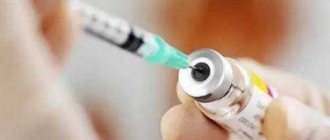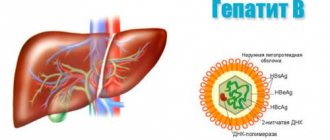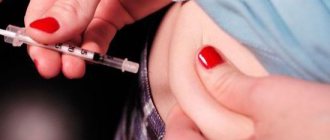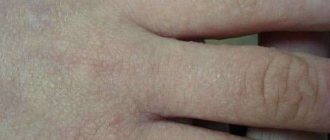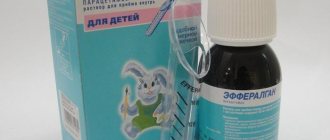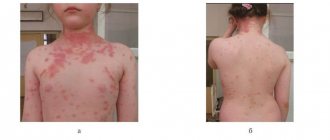(Another useful site - experts on vaccinations)
If for some reason your child has not been vaccinated in accordance with the vaccination schedule, then most likely his body is not sufficiently protected from dangerous infections and continued immunization may be required.
missed hepatitis B vaccination
BCG vaccination schedule was violated
missed the DPT vaccine
Missed polio vaccination dates
missed vaccination against measles, rubella or mumps
If for some reason your child has not been vaccinated in accordance with the vaccination schedule, then most likely his body is not sufficiently protected from dangerous infections and continued immunization may be required. However, each vaccine differs in its antigenic composition, the intensity of the reactions it causes in the body and the duration of action. Therefore, the question of what the further timing of vaccination is is always decided individually, taking into account the state of the child’s immune system, the diseases he has suffered and the type of vaccines. As a guide for constructing a further vaccination schedule, the following general recommendations can be given, which consider violations of vaccination deadlines separately for each category of vaccines.
Hepatitis B
·If the first vaccination against hepatitis B is missed, that is, it was not performed in the first 12 hours after the birth of the baby, then you can start vaccination on any subsequent day and then follow the standard schedule - the second vaccination is given a month later, and the third after another 5 months.
·If you missed the hepatitis B vaccination, which is performed, according to the vaccination calendar, a month after birth, then it can be performed a maximum of 4 months after the first one. Moreover, the shorter the interval, the more reliable immunity will be formed. If more than 4 months have passed since the first vaccination, then the administration of vaccines is usually continued as if the vaccination schedule had not been disrupted, but in this case there is a high chance of insufficient immunization. If the doctor doubts the effectiveness of further vaccination, then it may be necessary to determine antibodies to the hepatitis B virus in the child’s blood, with a mandatory quantitative study.
·If you miss the third hepatitis B vaccination, you do not have to worry about a decrease in the effectiveness of vaccination for 18 months after the first vaccination. This is the maximum period of time after which an analysis for the concentration of antibodies against hepatitis B will most likely be required to complete the course. In some cases, when sufficient immunity has not been formed even after completing the course of vaccination, additional vaccination may be required.
BCG
·If the timing of BCG vaccination is violated, then the tuberculosis vaccination is given in the fourth month of life. Before vaccination, a Mantoux test must be performed and vaccination is carried out only if a negative result is obtained. A positive test may mean that the child has already encountered the tuberculosis pathogen and may be infected. This is an indication for further, more detailed examination. The timing of the vaccination is due to the fact that during the first 3 months of life, immunity has not yet been formed enough to give an adequate response to the introduction of tuberculin, which is used in the Mantoux test, and the reaction may be false negative. If you have not yet been vaccinated, but it is known that the child has been in contact with a patient with tuberculosis or a carrier of Koch's bacillus, then low doses of anti-tuberculosis drugs are prescribed and, after completing the course of preventive treatment, the Mantoux reaction is examined. If the test is positive, treatment is continued, and if the test is negative, vaccination is performed, followed by isolation of the child for a week. For normal formation of post-vaccination immunity, at least a month must pass between the BCG vaccination and other vaccinations.
DTP
·If you missed the DTP vaccination, which according to the vaccination calendar is performed at 3 months, then you can start the vaccination course at any time before the age of 4 years. After 4 years of age, the administration of domestically produced vaccines with a pertussis component is not allowed, but the French analogue Tetracoc (with an anti-poliomyelitis component in the composition) can be used. From 4 to 6 years of age, vaccination is done with the ADS vaccine, and after reaching 6 years of age, ADS-M is used. These are vaccines without pertussis components, the latter contains reduced dosages. If a child has had whooping cough, and you have not yet received a single DPT vaccination, then vaccination with DPT toxoid is carried out (two vaccinations with a month's interval and one revaccination after a year).
· Violation of the timing of vaccination of the second DTP vaccination does not entail a repetition of the entire cycle - the administration of vaccines continues as if the schedule had not been lost, maintaining an interval between vaccinations of 30 days. If by this time the child has had whooping cough, then he is no longer given DTP vaccinations; instead, ADS is used, and after 9-12 months the ADS is repeated
·If the third DPT vaccination is missed, it is performed regardless of the omission. If a child who has already been vaccinated twice with DTP has had whooping cough, the course of vaccination is not continued and is considered completed. Revaccination is carried out with ADS, after 9-12 months. As already mentioned, from the age of 4, vaccines without a pertussis component are administered. In order to have time to fully vaccinate a child against whooping cough, sometimes it makes sense to perform the first DPT revaccination, maintaining only the minimum permissible interval - 6 months.
Polio
·If the first polio vaccination is missed, children under 6 years of age are vaccinated twice, with an interval of 30 days. For children over 6 years of age, the vaccine is administered once.
·If the second polio vaccination is missed, vaccination is not started again, but continued, despite the extended interval. The current vaccination calendar is built taking into account the use of OPV (live polio vaccine), but it is acceptable to replace it with IPV (an inactivated vaccine, more effective).
·If the third or fourth vaccination against polio is missed, then the tactics are the same as if you missed the second vaccination. It is important that before reaching 2 years of age the child is vaccinated 5 times with OPV or 4 times with IPV. When using vaccines together, the total number of vaccinations should not be less than 4.
Measles, rubella, mumps
·If your vaccination schedule has been thrown off track and you have missed your first measles, rubella or mumps vaccination, it is best to get it as soon as possible. According to the vaccination calendar, vaccination against these infections is carried out simultaneously, in different parts of the child’s body, with separate syringes or by using combined vaccines containing components against several infections. It is recommended to resort to separate administration of vaccines if the child has already had any of the listed infections, against which the creation of specific immunity is no longer required. Even if the timing of vaccinations has been significantly shifted, subsequent revaccination is carried out at the age indicated in the national vaccination calendar.
·If revaccination against measles, rubella or mumps is missed, the vaccine is given at any appropriate time, trying to create immunity before the child enters school. If for some reason vaccinations against rubella, mumps and measles are performed in the form of single-component mono-vaccines, then the recommended interval between their administration should not be less than a month. Otherwise, there is a risk that the second vaccine will be inactivated by immune cells produced in response to the first vaccine.
·If vaccination against rubella, which is given to girls during adolescence, is missed, it is done as soon as health conditions allow. The vaccine can be done at any age unless pregnancy is excluded.
How to properly prepare a child for vaccinations against diphtheria, hepatitis, rubella, polio and other childhood diseases? Get acquainted with the vaccination calendar and find out where it is best to get vaccinated. Consulting pediatrician Olga Minkina.
Hepatitis B
In the vaccination calendar, the hepatitis B vaccine comes first: it is given to the child during the first day in the maternity hospital. Hepatitis B is an infectious disease that causes severe liver damage. The second vaccination is carried out at 3 months, the third at 6 months.
Is it worth vaccinating your baby right in the maternity hospital?
Doctors have differing opinions on this matter. Many people believe that it is not advisable to vaccinate in the first hours of life, since the newborn still has a very poor immune response and vaccination may turn out to be pointless - the child will not develop immunity against hepatitis B.
· It is more reasonable to postpone the first vaccination to a later time, for example, you can do it at 3 months, then vaccination will be carried out according to the scheme: 3-6-9 months.
·Children are vaccinated according to a special scheme if their mothers are carriers of hepatitis B or there are people in the family suffering from this disease. Babies must be vaccinated in the first 12 hours after birth, the second vaccination is carried out at the age of 1 month, the third at 6 months, and the fourth at 12 months.
· The vaccination is done intramuscularly in the anterior lateral part of the thigh, and after 3 years - in the shoulder.
·Vaccination is usually tolerated quite easily by the child. In some cases, there may be a slight rise in temperature, thickening, and redness at the injection site. No special preparation is required for vaccination.
·For hepatitis B there are single vaccines (Combiotech, Euvax B, Engerix B, etc.) and combined ones (for several diseases).
It is advisable that intramuscular administration of vaccines to young children should be carried out in the anterior lateral part of the thigh. When the vaccine is administered into the buttock, complications often occur (there is a risk of getting into the subcutaneous fat, which leads to swelling); the nerve trunk can be damaged, and there is a smaller immune response. For older children, injections are given in the upper third of the shoulder.
Why does swelling occur at the injection site and should you be afraid of it?
The effect of the vaccine can affect the baby in different ways; some reactions are within normal limits. But parents should definitely pay attention to whether the entire leg is swollen after DTP or just the injection site.
We advise you to read: Inflamed wisdom tooth gums and swelling
Swelling of the thigh area
Any specialist will tell you that there should be swelling, and even severe redness, at the injection site. A bacteriological drug has been introduced into the body, and the immune system has to react to it. But if the vaccination site is not swollen, then this indicates either very strong immunity, or, conversely, its apathetic functionality. But here it should be remembered that only a small tumor up to 3 cm in diameter is considered normal. A lump within 3-8 cm indicates non-compliance with the doctor’s instructions and is also not dangerous, but if it is large, you need to consult a doctor.
Tumor of the entire leg
A problem affecting the entire leg becomes a good reason to consult a pediatrician. Especially if accompanying symptoms have also developed: the temperature has become higher, diarrhea, heartburn, drowsiness and lethargy have appeared. During the first few days after the procedure, all of this may also be normal, but high body temperature and swelling that persist for five days often indicate complications.
It is important to pay attention to the characteristics of the tumor itself:
- pus, rash and unpleasant odor;
- a sharp deterioration in behavior, crying and irritability;
- rapid swelling of the entire leg, starting from the injection site.
In this case, we may be talking about a developing cold abscess and purulent infiltrate. This means that an infection was introduced into the skin puncture site, and purulent inflammation of the tissue began. It is better not to self-medicate in such a situation; you should immediately contact a surgeon. He will open and wash the wound, and then prescribe antibiotics.
It is also worth checking the baby for allergies; swelling can be a common manifestation of an allergic reaction.
Tuberculosis
A child is vaccinated against tuberculosis in the maternity hospital in the first 3-7 days. Contraindications to vaccination are low body weight (less than 2000 g), intrauterine infection, hemolytic disease of the newborn, purulent-septic diseases, severe damage to the central nervous system.
·If the child was denied vaccination in the maternity hospital, it can be done later (preferably before 6 months). Please note that if you are going to vaccinate a child older than 2 months, you will first need to do a Mantoux test. This is necessary to find out whether the child is infected with the tuberculosis bacillus - then vaccination will be contraindicated for him.
·Vaccinations against tuberculosis are given only in a medical facility; Doctors visiting homes do not have the right to vaccinate children against this disease.
·Vaccination against tuberculosis is always carried out separately from other vaccinations.
·Every year, a child is given a Mantoux test to determine whether he is infected with tuberculosis. If the baby was vaccinated already in the maternity hospital, then the Mantoux test is given to him for the first time at 1 year.
· The vaccination is given to children intradermally - in the area of the left shoulder, at an older age - under the shoulder blade.
·Two vaccines are used against tuberculosis - BCG and BCG-M (light version).
· Revaccination is carried out at 7 years of age.
Polio
For a long time, children in our country were vaccinated with a “live” oral vaccine (OPV) - it was dripped into the mouth. Unfortunately, because of this, there have been cases (albeit very rare) of vaccine-associated polio, when the disease itself developed due to the vaccine, leading to disability.
· Currently, they are trying to move away from the use of “live” vaccines, and instead use an inactivated vaccine (IPV) - it contains “killed” viruses and is not capable of causing disease. The inactivated vaccine is administered intramuscularly.
·After using a “live” oral vaccine, a child sometimes experiences stool upset for 1-2 days, and in some cases there is an increase in temperature. The inactivated polio vaccine usually does not cause such reactions.
· The polio vaccine is given at 3 months, then at 4.5 and 6 months. Revaccination is carried out at 18 and 20 months.
·The inactivated polio vaccine used in Russia is Imovax Polio. In addition, the combined Pentaxim vaccine is used (protection against polio, whooping cough, diphtheria, tetanus and Haemophilus influenzae type b).
Who should not get the DPT vaccine?
Despite the obvious benefits of DPT vaccination, there are a number of contraindications to its use.
Doctors do not recommend an injection if:
- the baby was born prematurely and spent some time in an oxygen pressure chamber;
- the child has recently suffered an illness and has not had time to restore immunity;
- the baby is currently suffering from acute respiratory infections;
- any of the parents is intolerant to this vaccine.
Depending on the contraindications, a decision is made to postpone the vaccination date or replace DTP with another drug. Among analogues, the most common are the French Infanrix and the new acellular vaccine Pentaxim.
Pentaxim, in addition to the triad - whooping cough, diphtheria, tetanus - protects against polio and hemophilus influenzae infection. Infanrix, in turn, is easier to tolerate, because practically does not cause side effects. However, remember that this drug requires special storage conditions at a certain temperature, so it makes sense to purchase it immediately before vaccination.
source
Diphtheria, whooping cough, tetanus
For these diseases, combination vaccines are mainly used (that is, those that protect against several diseases at once). The first vaccination is given at 3 months, the second at 4.5 months, and the third at 6 months; revaccination - at 18 months. The vaccine is administered intramuscularly into the anterior lateral thigh or buttock. This vaccination is not always easily tolerated by the child and requires prior preparation. The heaviest component of the vaccine is the pertussis component. After vaccination, local and general reactions are possible. Local symptoms include redness and swelling at the injection site; general symptoms include malaise, fever, and in rare cases, convulsions. The reaction after the second and subsequent vaccinations is often stronger than after the first.
· Recently, vaccines have appeared that give fewer post-vaccination reactions. Good tolerability is explained by the fact that they contain an acellular pertussis component. These vaccines are foreign-made and are offered in paid medical centers.
· Before vaccinating your child against whooping cough, diphtheria and tetanus, it is advisable to prepare him: for 1-3 days before vaccination, the baby is prescribed antihistamines in age-appropriate dosages. The question of whether to give a child antihistamines on the day of vaccination and after it is decided by the pediatrician individually in each case.
·After vaccination, children may develop a fever. This usually happens 6-8 hours after vaccination; high temperature can last up to 2 days.
· Therefore, you must have antipyretic drugs at home (preferably in the form of rectal suppositories) so that you can use them if necessary.
·If after the first administration of the vaccine there was a rise in temperature to 38.5 °C or higher, then this is a contraindication to repeated vaccination with a pertussis component. Repeated vaccinations are made with vaccines without a pertussis component or containing an acellular pertussis component.
·Vaccines that protect against these diseases are DPT, ADS (without pertussis component), Infantrix, Pentaxim.
Video on the topic
An allergist-immunologist tells what to do if a lump forms at the site of vaccine administration:
DPT vaccination is needed to protect a child from dangerous infectious diseases such as whooping cough, diphtheria and tetanus. One of the most common side effects is swelling and swelling at the injection site.
This reaction indicates the production of the necessary antibodies to pathogens. To speed up the disappearance of swelling, you can treat the skin area with ointments that have anti-inflammatory, anti-exudative and antimicrobial properties.
If the swelling does not go away within two weeks and is accompanied by an increase in temperature and the appearance of suppuration, you need to consult a doctor. In all other cases, this side effect will disappear within five days.
source
Measles, rubella, mumps
·Children are vaccinated against these diseases at 12 months and 6 years. Combination vaccines against three diseases, two-component and mono-vaccines are used. There are vaccines of both domestic and foreign production.
· Since the vaccine against these diseases is “live”, after its administration the child may experience some reactions, for example, an increase in body temperature, swelling of the lymph nodes, the appearance of a rash, a slight cough and runny nose - that is, the child seems to have suffered from these diseases in a very mild form. Typically reactions occur on days 1-2, 5-8 and 10-12.
To make it easier for your baby to tolerate vaccination, it is advisable to give him antihistamines 1-3 days before vaccination and several days after it. The pediatrician will calculate how long to give the drugs after vaccination and in what dose. Also, do not forget to stock up on antipyretic medications so that your baby’s fever does not take you by surprise.
·Combined vaccines against measles, rubella and mumps - Priorix, Trimovax and others.
Doctors' answers to popular questions
Why does the vaccine injection site swell?
In medical practice, it is customary to distinguish three types of post-vaccination reactions - mild, moderate, and complications.
Mild and medium are the norm and are very common in babies. Among them there are general and local reactions. The first includes an increase in body temperature, a feeling of drowsiness and weakness. And for the second - redness and thickening at the vaccination site.
The appearance of post-vaccination infiltrate is a natural reaction to vaccinations against whooping cough, tetanus and diphtheria.
The substances included in the vaccine deliberately provoke the occurrence of an inflammatory process. A larger number of cells are involved in the production of antibodies to infectious diseases, which results in a more pronounced immune effect.
Is it possible to treat the vaccination site with iodine?
An iodine mesh is recommended as a method for quickly resolving swelling. It must be applied with very thin and light strokes so as not to cause a skin burn.
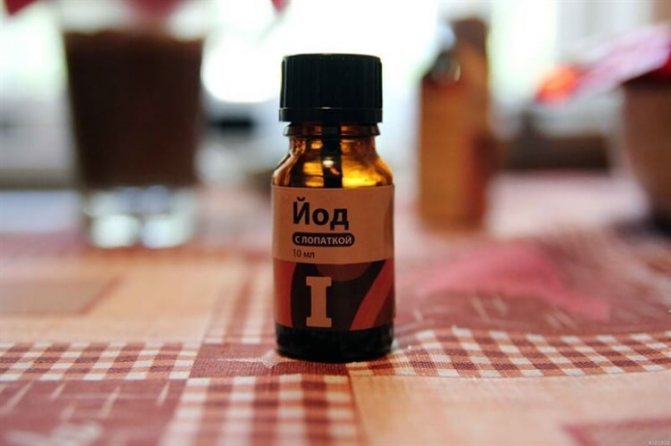
Iodine
You should first make sure that there are no allergic reactions to iodine or other contraindications to its use. The procedure should be performed until the swelling completely disappears.
What should not be used to treat a lump?
Due to the risk of an abscess, you cannot treat the injection site with ichthyol ointment and Vishnevsky ointment, or perform warming procedures.
It is strictly forbidden to knead or rub the reddened area of skin.
What measures should be taken to prevent complications?
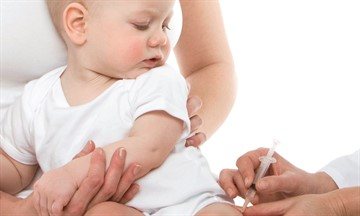
It is necessary to reliably protect the baby from infections - for the first time after vaccination, try not to visit public places and avoid playing too actively on the street.
It is recommended to vaccinate with DTP in the warm season, when the child’s body is saturated with vitamins necessary to normalize the functioning of the immune system.
However, for those babies who are prone to allergic reactions, on the contrary, it is better to vaccinate in winter.
Other diseases
There are a number of vaccinations that are not included in the Russian national vaccination calendar, but, nevertheless, they can be done to protect the child from serious diseases. By the way, in European countries and the USA these vaccinations are included in the mandatory vaccination plan.
In our country, you will have to do them at your own expense.
· Haemophilus influenzae type b infection (Hib infection) often causes pneumonia, otitis media, meningitis and other diseases in children. It poses the greatest danger to children from 6 months to 2 years. The Haemophilus influenzae vaccine can be given at the same time as the diphtheria, whooping cough and tetanus vaccination. Three vaccinations will be required with an interval of 1-1.5 months and one revaccination, which is carried out a year after the third vaccination. If the vaccination is given to a child older than 6 months, then two vaccinations and one revaccination will be enough for him.
·Vaccine against hemophilus influenzae infection - “Act-HIB”. In addition, you can protect yourself from this disease using the Pentaxim combination vaccine.
·After 2 years of age, a child can optionally be vaccinated against pneumococcal infection that causes pneumonia (Pneumo 23), meningitis (Meningo), and chickenpox (Varilrix). In childhood, chickenpox is usually tolerated quite easily by children, but in adolescence it can be severe and cause complications.
·In addition, you can vaccinate your child against hepatitis A. Vaccination is carried out twice, the second time - 6-12 months after the first. Usually the vaccination is tolerated quite easily. Swelling and swelling at the injection site are possible. For hepatitis A, the vaccines “Havrix”, “https://www.baby.ru/pharmacy/40606-avaxim”, “Vakta” are used. There are also combined vaccines against hepatitis A and B.
Vaccination rules
·Vaccination cannot be done if the child is sick. Vaccination can be carried out 2-4 weeks after the baby has recovered.
· The interval between vaccinations must be at least a month.
·Vaccination in hot weather is undesirable.
· It is better to refrain from visiting public places with your baby before vaccination and after the administration of live vaccines.
·Before and after vaccination, it is not recommended to introduce new complementary foods to the child.
·You should not stop breastfeeding during the vaccination period.
·Members of the child’s family must be healthy at the time of vaccination.
· It is not recommended to bathe the baby in the evening on the day of vaccination.
·Parents have the right to refuse to vaccinate their child (based on the Federal Law “On Immunoprevention of Infectious Diseases” dated September 17, 1998 No. 157-FZ), but they must understand that they are responsible for the health of their child.
The body's reaction after the second and subsequent vaccinations is often stronger than after the first vaccination.
A second vaccination is not given if, after the first one, the child has the following reactions:
· shrill cry of the baby, which lasted for 3 hours or more;
·increase in the child’s body temperature to 38.5 °C and above;
· the occurrence of a strong local reaction to vaccination (redness, swelling and swelling with a diameter of more than 5 cm at the injection site).
A swelling appeared on the leg after DPT vaccination: what to do?
After an injection of DTP, Pentaxim or other similar drugs, the child may experience swelling and swelling directly on the thigh at the injection site or throughout the entire leg. This is the body's normal immune reaction, confirming that the vaccine has begun to work.
The phenomenon disappears on its own within a few days if all the requirements and recommendations of the doctor are followed:
- do not leave the medical facility within 45 minutes from the moment of vaccination to avoid the development of allergic reactions;
- avoid active and long walks outside on the day of injection;
- exclude from the children's diet all foods that can trigger allergies - in particular, chocolate, citrus fruits and nuts;
- if the child has a tendency to allergies, let him take Fenistil or Zyrtec a day before the injection (to choose the appropriate drug, you need to consult a doctor);
- For one day after vaccination, avoid getting moisture at the injection site.
However, if the baby feels significant discomfort, it is necessary to provide him with help; the following tips are suitable for these purposes:
- iodine mesh . A thin mesh of iodine can be applied to the site of swelling if there are no contraindications. This should be done before going to bed;
- cabbage leaf compress . This is a reliable and proven method of eliminating swelling and other associated unpleasant symptoms, including redness and itching. At night, apply a suitable sized cabbage leaf to the child’s leg and wrap it with a piece of cotton cloth;
- a mixture of honey and flour will relieve swelling and pain . It should be applied to the bump and secured with a gauze bandage. This procedure is done before bedtime.
For three to five days, until the adverse reactions completely disappear, you need to put on the baby the most comfortable and spacious clothes, made from natural hypoallergenic materials. And while at home, it is advisable that no fabric touches the affected area of the skin.
Where to get vaccinated?
·In district clinics Vaccination in district clinics in accordance with the National Vaccination Calendar is carried out free of charge. Before vaccination, the child is examined by a doctor. Information about vaccinations given is entered into the child’s card, which is stored in the clinic. The disadvantages of this option include the fact that before vaccination, you and your child may have to sit in line for a long time, and that the pediatrician has too little time to properly examine your baby. In addition, local clinics often offer not the best vaccines.
·In medical centers Here you can find better modern vaccines. The cost of vaccination will consist of the cost of a doctor’s examination (200-1200 rubles) and the cost of the vaccine itself (100-2000 rubles). If you want to contact a paid center, then carefully consider its choice - it is advisable that the medical center has a good reputation and its doctors have been involved in vaccination prevention for a long time. Information about the vaccination done must be documented - for this it is advisable to have a vaccination certificate with you (a booklet in which all information about the vaccinations given is entered).
·At home Vaccinations at home can only be done by doctors who specialize in vaccine prevention. For a child, this is the most gentle option - the baby will not have additional stress in the form of a visit to the clinic. However, it must be taken into account that vaccines must be stored under strictly designated temperature conditions. And these conditions must be observed even during transportation, otherwise the vaccine may deteriorate. Therefore, vaccination at home can be carried out only if you completely trust the doctor who will do it or the medical center in which he works. Make sure that information about vaccination is included in the vaccination certificate.
Russian national vaccination calendar
Newborns (in the first 24 hours of life) First vaccination against viral hepatitis B Newborns (3-7 days) Vaccination against tuberculosis 3 months Second vaccination against viral hepatitis B, first vaccination against whooping cough, diphtheria, tetanus, polio 4.5 months Second vaccination against whooping cough, diphtheria, tetanus, polio 6 months Third vaccination against whooping cough, diphtheria, tetanus, polio, third vaccination against viral hepatitis B 12 months Measles, rubella, mumps 18 months First revaccination - diphtheria, whooping cough, tetanus, first revaccination - polio 20 months Second revaccination - polio 6 years Revaccination - measles, rubella, mumps 7 years Revaccination against tuberculosis, second revaccination - diphtheria, tetanus 13 years Viral hepatitis B (previously unvaccinated), rubella (previously unvaccinated girls or those who received only one vaccination) 14 years Third revaccination - diphtheria , tetanus; third revaccination - polio; revaccination - tuberculosis (if you were not vaccinated at 7 years old)

